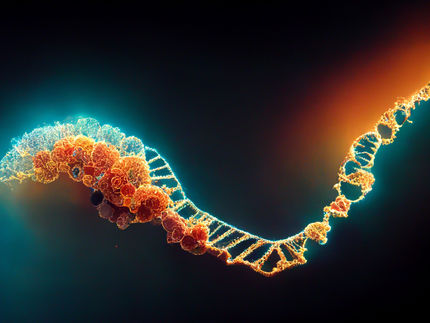Muscle-Targeted Gene Therapy Reverses Rare Muscular Dystrophy in Mice
Advertisement
gene therapy methods that specifically target muscle may reverse the symptoms of a rare form of muscular dystrophy, according to new research in mice conducted by medical geneticists at Duke University Medical Center. Infants born with the inherited muscular disorder called Pompe disease usually die before they reach the age of two. The researchers also said their approach of targeting corrective genes to muscles may have application in treating other muscular dystrophies.
Patients with Pompe disease have a defect in a key enzyme that converts glycogen, a stored form of sugar, into glucose, the body's primary energy source. As a result, glycogen builds up in muscles throughout the body, including the heart, causing muscles to degenerate. Using genetically altered mice in which the gene for the enzyme had been rendered nonfunctional, the researchers demonstrated they could introduce the functioning gene and correct glycogen buildup in heart and skeletal muscle. The findings suggest that such an approach should be considered as a potential gene therapy strategy for Pompe disease patients, the researchers report in a forthcoming issue of Molecular Therapy.
"Gene therapy in muscular dystrophies presents a unique challenge, because replacement of deficient, therapeutic proteins invokes an immune response that limits the efficacy of the treatment," said Duke medical geneticist Dwight Koeberl, M.D., senior author of the study. "By restricting the expression of introduced genes to muscle, the immune response can be prevented or attenuated."
The muscle-targeted gene therapy might therefore apply to other forms of muscular dystrophy, they added. Muscular dystrophies include many genetic diseases, all of which are characterized by progressive weakness and degeneration of the skeletal muscles which control movement.
The researchers delivered the glycogen-degrading enzyme with an adeno-associated virus (AAV) vector. AAV is not associated with any known human disease. The DNA coding for the enzyme was linked to a specialized DNA "promoter" region that restricted its activity to muscle. The investigators either injected the viral particles into the muscle or injected it intravenously in Pompe disease mice.
Six weeks after muscular injection with the virus containing the muscle-restricted gene, mice exhibited high levels of the enzyme and reduced glycogen content in the injected muscle. The mice also had a reduced immune response to the new enzyme, compared to those in which gene expression was not limited to muscle, they found.
Other news from the department science
Most read news
More news from our other portals
See the theme worlds for related content
Topic world Gene therapy
Genetic diseases once considered untreatable are now at the center of innovative therapeutic approaches. Research and development of gene therapies in biotech and pharma aim to directly correct or replace defective or missing genes to combat disease at the molecular level. This revolutionary approach promises not only to treat symptoms, but to eliminate the cause of the disease itself.

Topic world Gene therapy
Genetic diseases once considered untreatable are now at the center of innovative therapeutic approaches. Research and development of gene therapies in biotech and pharma aim to directly correct or replace defective or missing genes to combat disease at the molecular level. This revolutionary approach promises not only to treat symptoms, but to eliminate the cause of the disease itself.
























































